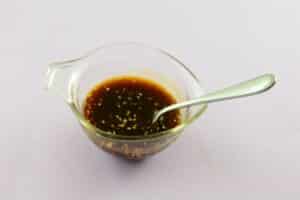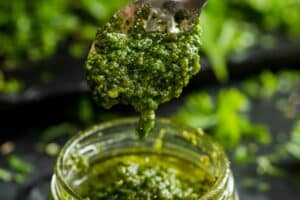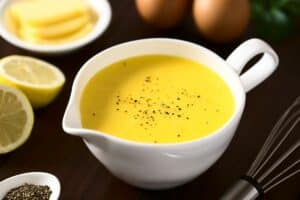Everybody loves good Mexican food, and a Mexican dish isn’t complete without a delicious sauce. Sauces give that extra flavor and bring an already tasty meal to new heights.
Favorite Mexican sauces that will make every party or gathering better are salsa, enchilada, and taco sauce.
When it comes to the enchilada sauce vs taco sauce bout, there are fans on both sides. Although similar, some people’s mouths water more for one over the other.
So you don’t disappoint your dinner party participants, it’s time to clear up the difference once and for all.
Differences Between Taco Sauce and Enchilada Sauce
The main difference between taco sauce and enchilada sauce is the usage of spices. Enchilada sauce takes its spiciness from chilies, while taco sauce depends on cayenne pepper. Additionally, a perfect enchilada sauce will always use chili powder, while taco sauce will have smoked paprika.
Just like regular salsa, taco sauce contains tomatoes, onions, and sweet or hot peppers. You can add vinegar or lemon juice for tanginess as well.
But, unlike when making salsa, all ingredients must be pureed and cooked until you get a thick yet smooth texture for a taco sauce.
On the other hand, Enchilada sauce doesn’t necessarily have tomatoes, but it’s also pureed and cooked to a more liquidy texture.
In cases where there is tomato, people prefer tomato paste rather than tomato sauce. In a taco sauce, tomato sauce ties the flavors together. In an enchilada sauce, the tomato paste serves as one of the flavors.
A basic taco sauce also needs fewer ingredients. The key ingredients are:
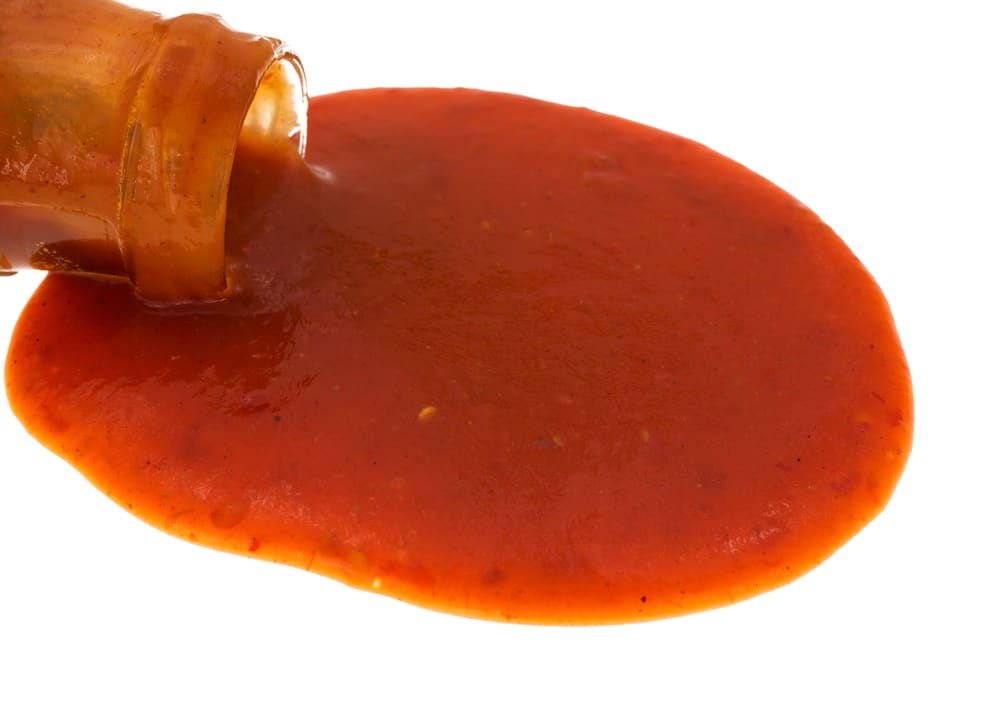
- Tomato sauce
- Paprika
- Cayenne pepper
You can add other ingredients such as onion, garlic, or oregano, but for taco sauce 101, the three components are all you need.
Enchilada sauce usually has several other ingredients:
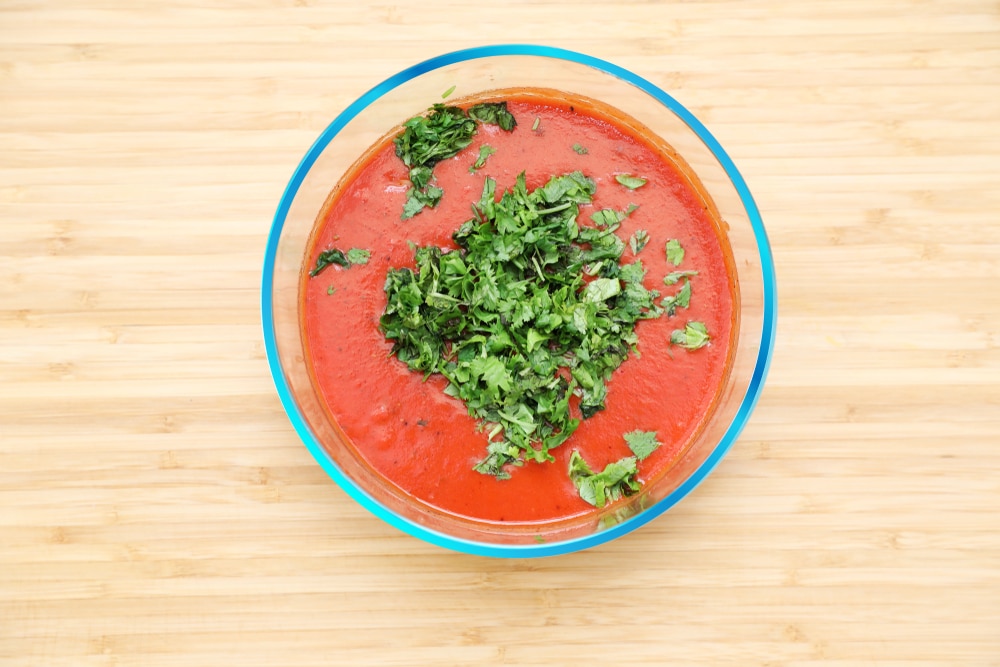
- Chili powder
- Fresh chilies
- Broth (chicken or vegetable)
- Tomato paste
- Garlic
- Cumin
Both sauces are very versatile, and everybody has their secret spice. But you can notice the pattern in both sauces (except for chili and cayenne pepper). Just keep in mind that an authentic enchilada sauce usually takes a bit more time to make.
Another significant difference is that there are subtypes of enchilada sauce, depending on the chili you use. You can have green and also red enchilada sauce. Taco sauce, on the other hand, doesn’t have significant subtypes.
Finally, it all comes down to the food you’re having with your sauce. Taco sauce is the most common for tacos. It can also serve as a dipping sauce for chips or nachos.
Mexican food fans usually use enchilada sauce for a chicken enchilada, various chicken-based soups, and vegetarian enchilada casserole. Naturally, if you’re making the vegetarian version, make sure to use vegetarian broth.
While you’ll serve taco sauces with side dishes, enchilada sauce is more common with main dish recipes. Besides soups, chicken, and casserole, you can also use enchilada with pasta, lasagna, and burritos.
Related Article: Differences Between Green vs Red Enchilada Sauce.
How to Substitute Taco Sauce for Enchilada Sauce
The similarity is the reason why people often use enchilada as a taco sauce substitute and vice versa.
If you prefer the chili taste over the cayenne pepper flavor, but you thirst for some tortilla chips, feel free to dip the corny delight into an enchilada sauce.
The good thing is if you plan to substitute taco for enchilada sauce, you won’t need as much as you usually do. Tacos and other dipping sauces require a smaller quantity than a pan full of enchiladas.
This also means you’ll want to add less chili powder and fresh chilies since you don’t want to overdo it. You want a spicy taco sauce, but you don’t want to end up drinking water for the rest of the day.
If you plan to use taco sauce in enchiladas, keep an eye on the consistency. Enchilada sauce is usually more liquidy, so you’ll want to keep it in the saucepan for a minute longer, at least until you get a thicker sauce.
The same logic works the other way around. If you don’t have fresh jalapenos in your fridge, but you have extra taco sauce from last night, use it for enchiladas.
Enchiladas require enough liquid so that tortillas can absorb the sauce. Instead of making it thicker, the goal is to make the taco sauce more watery.
Besides adding water, you can increase taco sauce quantity and flavor by adding red chilies and mix in a blender.
It’s also possible to turn a classic red taco sauce into a green sauce that will fool anyone into thinking it’s an enchilada sauce. Just add green salsa to the mix. Another great way to “cheat” your way through is to add green tomatillos.
Fans of silkier white sauces can also add yogurt for perfect enchilada suizas.
The adaptable nature makes the taco sauce vs. enchilada sauce battle more of a collaboration than a fight. Both can serve as each other’s substitutes, and both will make your food tasteful.
Three main differences to keep in mind are:
- Sauce texture – When using as a substitute, make sure you get the right consistency.
- Quantity – When using as a substitute, make sure you don’t cook too much or too little.
- Cayenne pepper vs. chilies – Entirely up to personal taste preferences.
Conclusion
Although often you’ll buy specific ingredients for your recipe ahead, sometimes you won’t.
An uninvited friend might drop by, or a sudden Mexican food craving will rush at a moment’s notice. In times like that, you’ll want to prepare something as quickly as possible.
Fortunately, you’ll usually have the essential ingredients somewhere in your house. Instead of wondering if you can use one sauce instead of another, remember that it’s all about making yourself and others happy.
Finally, if you’re not a picky eater, the enchilada sauce vs. taco sauce differences won’t matter. Whatever it is you end up making, you’re sure to have a delightful meal. Enjoy.


